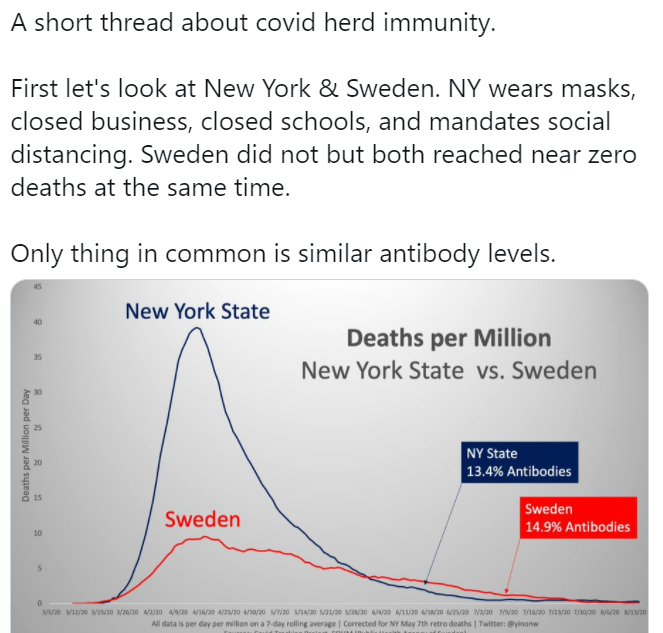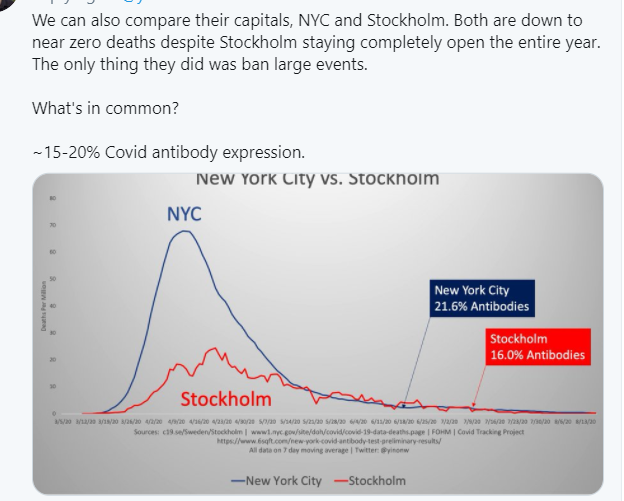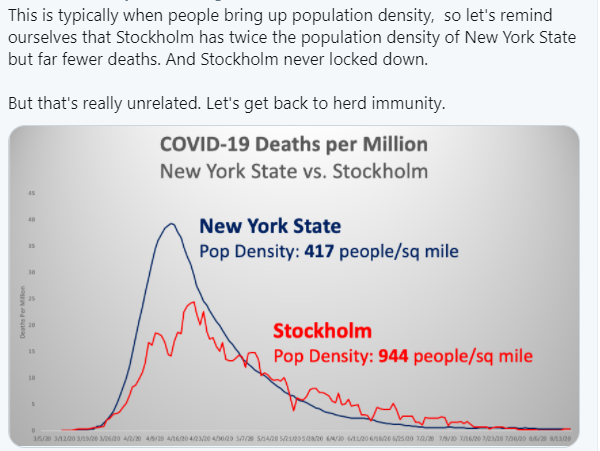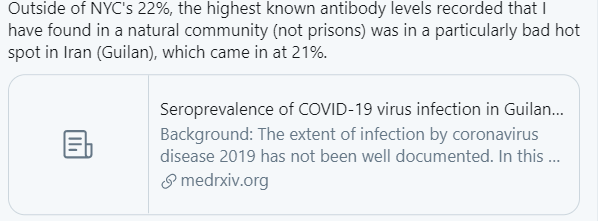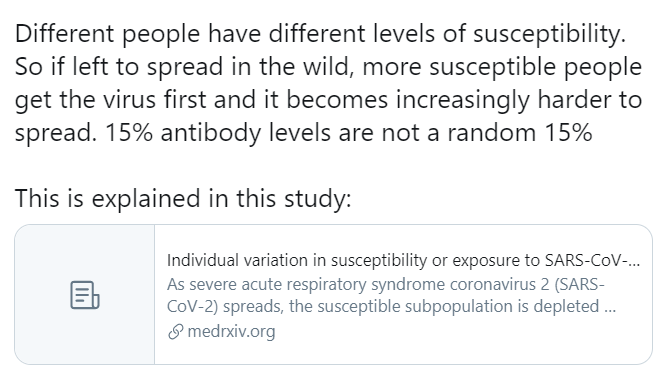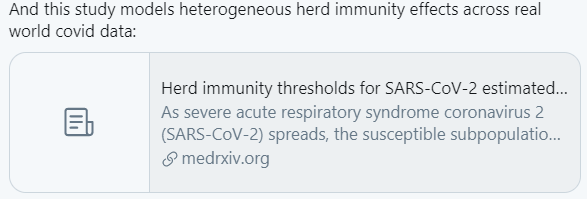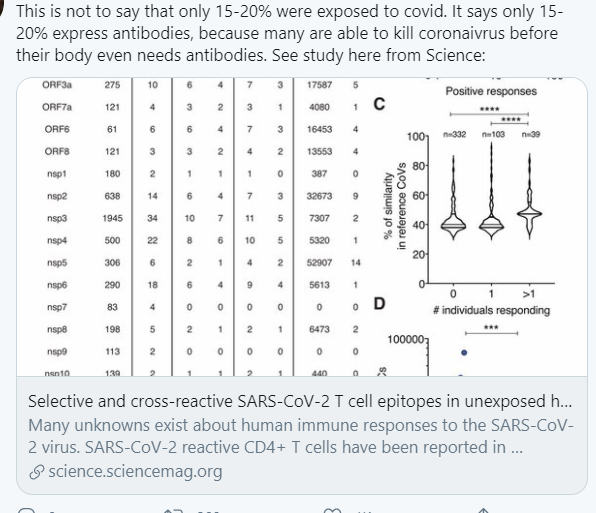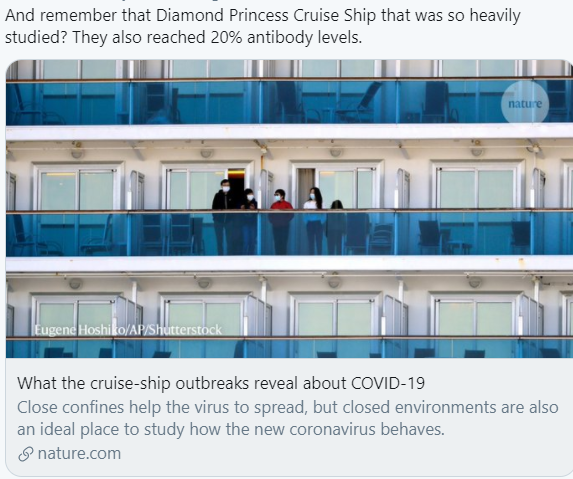Since a recent "lockdowns don't have any impact" thread seemed to get some traction (including being retweeted by a friend of mine who is reasonably quantitative), I thought it would be good to revisit the claims in detail. Bit of a long

It makes a compelling argument, if you accept its claims at face value. But if you kick the tires, even the slightest bit, it seems every "factual" statement falls apart.
First, let's talk briefly about Sweden. There are a lot of misconceptions about Sweden.
More than half of households in Sweden are single-occupant. It was well-known as early as March that this gave them advantages most countries didn't have. https://www.bbc.com/worklife/article/20200328-how-to-self-isolate-what-we-can-learn-from-sweden
More than half of households in Sweden are single-occupant. It was well-known as early as March that this gave them advantages most countries didn't have. https://www.bbc.com/worklife/article/20200328-how-to-self-isolate-what-we-can-learn-from-sweden
Also, Sweden closed universities and high schools.
Their rules are stricter than, for example, most of Australia right now:
https://www.krisinformation.se/en/hazards-and-risks/disasters-and-incidents/2020/official-information-on-the-new-coronavirus/restriktioner-och-forbud
Their rules are stricter than, for example, most of Australia right now:
https://www.krisinformation.se/en/hazards-and-risks/disasters-and-incidents/2020/official-information-on-the-new-coronavirus/restriktioner-och-forbud
Let's look at Sweden - I cannot find the claimed number in any source, reputable or otherwise, to be honest. I haven't looked too hard though.
The numbers in New York date to June, but are reasonable.
At about the same time in Sweden: " Nationwide, the average was 10.8 percent" https://www.thelocal.se/20200618/one-in-seven-stockholmers-had-coronavirus-antibody-in-private-tests
At about the same time in Sweden: " Nationwide, the average was 10.8 percent" https://www.thelocal.se/20200618/one-in-seven-stockholmers-had-coronavirus-antibody-in-private-tests
That error for Sweden isn't huge, but it's not small. But I'm not sure it really matters. Data can be messy. Next up, let's look at capital cities.
Again the numbers from NYC date to June. Stockholm had about 14% at that point. So, again, not too far off.
So why so many more deaths in NY than Sweden? You might say "population density", right? Seems reasonable. But, ah this is where it seems to get interesting...
So why so many more deaths in NY than Sweden? You might say "population density", right? Seems reasonable. But, ah this is where it seems to get interesting...
But let's investigate that a bit. Why does it look like he's comparing New York STATE to the CITY of Stockholm?
Seems inappropriate, right? Maybe he just made a typo.
the plot thickens.
Seems inappropriate, right? Maybe he just made a typo.
the plot thickens.
He is indeed looking at the density for New York State and not New York City.
But maybe he meant Sweden. Nope, Sweden's population density is around 60/sq mi.
So he went with Stockholm, huh?
But maybe he meant Sweden. Nope, Sweden's population density is around 60/sq mi.
So he went with Stockholm, huh?
No, Stockholm city has around 13,000/sq mi.
So where did he get his number?
Turns out, Stockholm COUNTY has about the number he found.
So where did he get his number?
Turns out, Stockholm COUNTY has about the number he found.
SO let's really compare:
New York State has significantly higher density than Sweden (factor of 7ish)
New York City is a bit more than 2x Stockholm city.
New York State has significantly higher density than Sweden (factor of 7ish)
New York City is a bit more than 2x Stockholm city.
Obviously he couldn't really compare 400 to 13000. He'd also get the answer he didn't want if he compared the state to the country or the cities to each other.
Somehow he made the only comparison that could support his claim without being obviously wrong.
Somehow he made the only comparison that could support his claim without being obviously wrong.
Let's charitably say that he made an incredibly strange mistake. But even still, it's obvious that the comparison he implied he was doing is not the appropriate comparison.
I am dubious.
I am dubious.
Whatever the reason for his mistake, it is inappropriate to make policy guidance (and yes when he's discussing the impact of different policies, that's what he's doing) without being careful.
But I'll assume it's just recklessness rather than intentional.
But I'll assume it's just recklessness rather than intentional.
He then comments on a few other places with around 10-20% seroprevalence.
Okay... then he gets to this:
Okay... then he gets to this:
Well, sure, seroprevalence in prisons is sometimes very high. Also meat packing factories get high. And residential care facilities.
But maybe he's right about what happens in cities.
But maybe he's right about what happens in cities.
Except...
over 40% in a ski resort https://www.politico.eu/article/over-42-percent-in-austrias-ischgl-had-coronavirus-antibody-tests-find/
over 40% in a ski resort https://www.politico.eu/article/over-42-percent-in-austrias-ischgl-had-coronavirus-antibody-tests-find/
Well over 50% in Iquitos Peru (and at 30% in Lambayeque Peru) https://ojo-publico.com/1975/covid-19-estudios-de-seroprevalencia-en-peru-no-son-concluyentes
Slums in Latin America and India are finding over 50% https://science.thewire.in/health/how-the-mumbai-covid-19-sero-survey-results-compare-to-what-we-already-know/
Maybe it's possible to discount some of these, but they aren't hard to at least find. Either he didn't look, or he saw them and conveniently ignored them
I don't think it's plausible that someone who has been paying attention well enough to feel comfortable giving policy guidance could have missed all of these.
And now an intermission... I'll come back to this to discuss how he then tries to use his observation that ignores much of the data in order to lend weight to his theories about what's going on...
And I'm back...
Before I continue, let me point out a number of people have replied to my earlier tweets with other examples that get past 50% seroprevalence. E.g., https://twitter.com/LongDesertTrain/status/1295649175347122176?s=20
Before I continue, let me point out a number of people have replied to my earlier tweets with other examples that get past 50% seroprevalence. E.g., https://twitter.com/LongDesertTrain/status/1295649175347122176?s=20
Ah a conflict seems to be brewing. This tweet is generally right - the virus acts like a targeted vaccine, getting the most susceptible first
Now he goes to @mgmgomes1 work, which is high quality, no question.
Her work has definitely influenced how I'm thinking about this. Before I offer my hesitance, let's see what she thinks about policy: https://twitter.com/mgmgomes1/status/1286983723796303873?s=20
I'm nervous that much of the heterogeneity the disease was exposing earlier was heterogeneity in behavior changes.
If distancing stops, the people who are largely isolated now may primarily interact with each other, creating a good environment for spread.
If distancing stops, the people who are largely isolated now may primarily interact with each other, creating a good environment for spread.
I don't know how to test for this without relaxing interventions.
So given uncertainties & opportunities, relaxing interventions in places that are well past peak seems a good idea, but it should be slow and responsive to data.
So given uncertainties & opportunities, relaxing interventions in places that are well past peak seems a good idea, but it should be slow and responsive to data.
Woah, a Science paper saying they don't ever develop antibodies? How did I miss that? Could that be?
I'm not an immunologist, so maybe I should let one of the authors of that study explain: https://twitter.com/profshanecrotty/status/1293344524731691008?s=20
I'm not an immunologist, so maybe I should let one of the authors of that study explain: https://twitter.com/profshanecrotty/status/1293344524731691008?s=20
Important quote in his thread: "T cells generally don’t completely prevent infections, they limit disease (make it shorter and/or less serious)."
There were no measurements of antibodies, just measurements of active infections (I don't think serology was available at the time).
Am I quibbling? Maybe, but I actually think serology would have shown higher antibody rates. (think of the prison scenario)
Am I quibbling? Maybe, but I actually think serology would have shown higher antibody rates. (think of the prison scenario)
First claim is false.
Second claim is false.
Third claim is based on the false premise that Stockholm continued as normal and that the other claims were true.
Second claim is false.
Third claim is based on the false premise that Stockholm continued as normal and that the other claims were true.
I wish people would stick to facts in this discussion.

 Read on Twitter
Read on Twitter